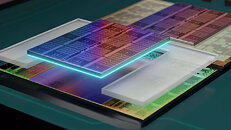
Intel Hikes 12th Gen Core Processor Pricing by 10 Percent
With everyone busy enjoying the announcements of new shiny toys at CES, Intel has taken the opportunity to jack up the prices on its older 12th Gen Core processors by around 10 percent. This wasn't entirely unexpected though, as Intel announced back in June of last year that it was going to increase the MSRP of its 12th Gen Core processors. The price increase affects different SKUs wildly differently, as the Core i9-12900K for example, is seeing a US$59 price increase and its new MSRP is now US$648, which is more than the Core i9-13900K which has an MSRP of US$589. On the other hand, the Core i3-12100 only gets a $12 price increase, which puts its new MSRP at US$134, which places it in the same price bracket as the Core i3-13100.
This is a very unusual move by Intel and it affects all of its 12th Gen Core desktop processors and possibly some other SKUs as well. Considering the 13th Gen Core parts are either priced cheaper or fall in the same price bracket, it's hard to see how Intel is going to see any sales of its older 12th Gen Core processors, especially as the two share the same socket. It's highly unlikely that this move will affect its shareholders in a positive way either, as Intel is likely to see lower sales with this price increase of its previous generation of processors, which in turn will result in even lower revenue. That said, it's unclear if this will affect retail pricing or not, as it's possible that many stores won't replenish their stock of 12th Gen Core CPUs once their current stock sells out.
This is a very unusual move by Intel and it affects all of its 12th Gen Core desktop processors and possibly some other SKUs as well. Considering the 13th Gen Core parts are either priced cheaper or fall in the same price bracket, it's hard to see how Intel is going to see any sales of its older 12th Gen Core processors, especially as the two share the same socket. It's highly unlikely that this move will affect its shareholders in a positive way either, as Intel is likely to see lower sales with this price increase of its previous generation of processors, which in turn will result in even lower revenue. That said, it's unclear if this will affect retail pricing or not, as it's possible that many stores won't replenish their stock of 12th Gen Core CPUs once their current stock sells out.































































